10 Portuguese cheeses you must try

This one goes out to all the cheese lovers out there! If you still didn’t know that Portugal is cheese heaven, it’s about time you start exploring all the different cheeses that our country has to offer. For a small territory, Portugal boasts a rich variety of options, both from the mainland and our Atlantic islands.
From well-known cheeses you can find in the supermarkets, to small artisanal producers who you will only be able to come across regionally, in local food markets or in specialized stores, there’s plenty to discover. And the good news is that, there’s no shortage of good Portuguese wine to wash it all down in one of food history’s best pairings: cheese and wine!
Are you looking forward to traveling to Portugal, trying our best cheeses and digging into the wonders of Portuguese cuisine? Allow us to welcome you in Lisbon and introduce you to the best flavors of our country!
If you’d like to take your research further, we recommend visiting good Lisbon-based cheese stores such as Queijaria in Príncipe Real or Manteigaria Silva, with locations both in Rossio and inside Time Out Market.
Without further ado, these are some of the best cheeses from Portugal:
1. Serra da Estrela cheese
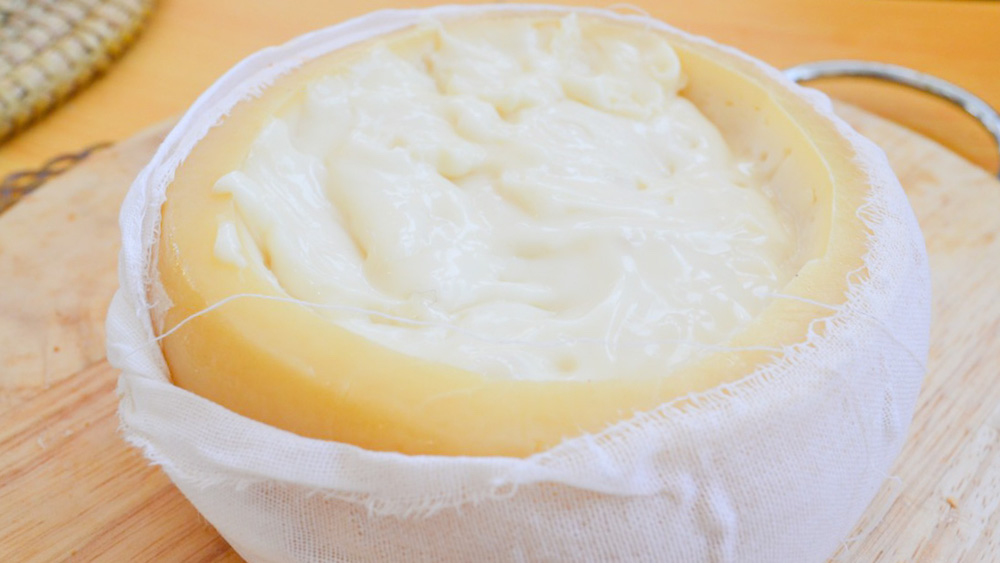
This is, quite probably, the most famous cheese from Portugal. Serra da Estrela cheese hails from the highest mountain in mainland Portugal, an area traditionally known for pastoral farming. Here graze the sheep that produce the milk used for this raw milk cheese, curdled with thistle flower and thus being considered a vegetarian cheese. Nowadays, the production of Serra da Estrela cheese is still artisanal and, being a product that has been granted PDO (Protected Designation of Origin) status by the European Union, follows rather strict rules.
Serra da Estrela cheese has a maturation period of at least thirty days. Even though it can be cured until it’s hard (look for Queijo Serra da Estrela Velho), the most popular version of it is soft and buttery. In fact, you wouldn’t be able to cut it into slices. Instead, we customarily cut an opening on the surface of the cheese ball and scoop out its gooey content, to be spread on bread or toast. Expect a rich texture and intense long-lasting flavor.
🍷Pair with dry white wine. This type of wine will complement the saltiness and intensity of the cheese. Serra da Estrela cheese also pairs beautifully with sweet late harvest white wines.
2. São Jorge cheese
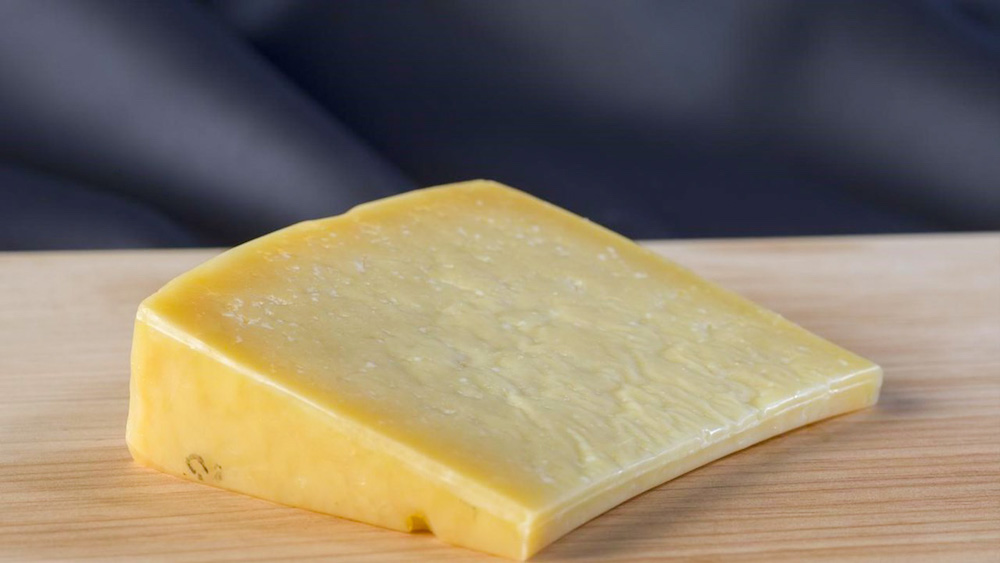
The Atlantic archipelago of Azores is famed for its natural landscapes, green pastures and grass fed cattle. Apart from high quality beef, Azorean cows and local human talent are responsible for the most sought after cheese of the Portuguese islands: Queijo São Jorge. This is a dairy cheese cured at room temperature until it reaches a firm consistency. Usually it is cured for at least three months but the most appreciated varieties, just like it happens with Parmigiano Reggiano from Italy, for example, are the more aged ones. The longer the cure the higher the price, but the flavor packed crystals that form inside this PDO Azorean speciality are indeed worth it.
Queijo de São Jorge has been produced in the Azores since the 15th century and it is, nowadays, one of the favorite dairy cheeses across Portugal. Oftentimes, when it doesn’t get the PDO certification seal, it is simply referred to as queijo da ilha, that is, island cheese. When you say this, locals will know immediately what cheese you are talking about, even though there are indeed other cheeses from the islands – see below!
🍷Being a robust cheese, São Jorge goes well with red wine aged in oak barrels.
3. Rabaçal cheese
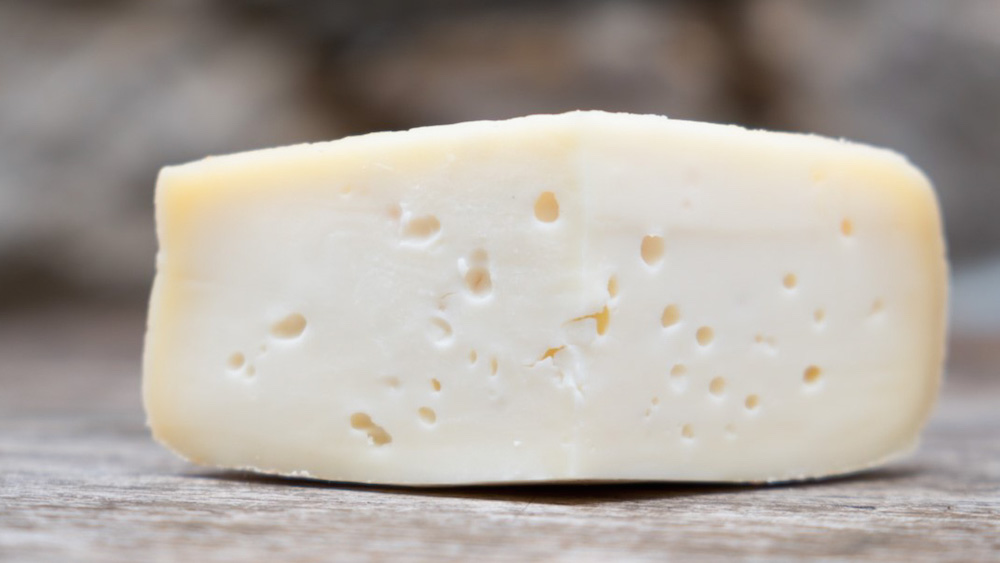
The mix of goat and sheep milk, curdled with the aid of rennet, gives origin to this semi-hard white cheese. This PDO cheese is produced in the town that gives it its name, Rabaçal, near Coimbra.
While its looks with scattered small holes make it a recognizable speciality on the Portuguese table, it really is its taste that sets it apart. The goats and sheep around Rabaçal feed a lot on costmary herbs, that being so aromatic make for a very distinct fragrance on the milk and, thus, also on the finished cheese that is cured for a minimum period of twenty days.
🍷Choose a wine from the same region and experience what the centre of Portugal tastes like. Red wines from Bairrada are a great option!
4. Transmontano goat cheese
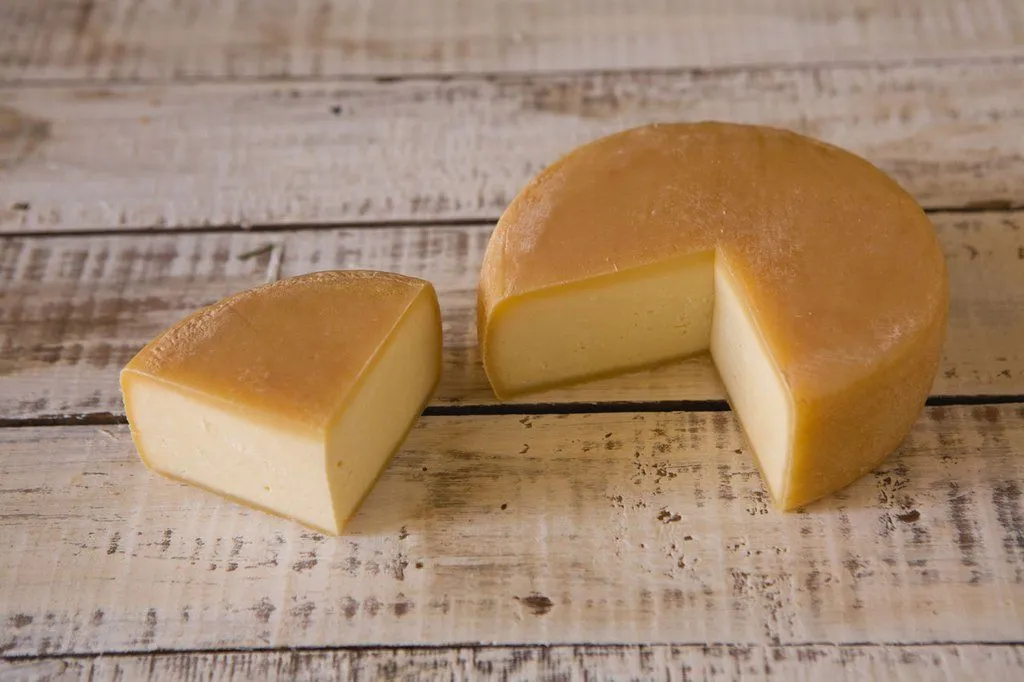
Queijo de Cabra Transmontano is a PDO cheese that can only be made with raw milk from the Serra breed of goats. Expect an intense white cheese with rather hard consistency, that is left to mature for at least sixty days at a medium-low temperature. The semi-curado variety will be the youngest, while velho stands for harder cheese usually matured between ninety days and two years, also commonly rubbed with olive oil or paprika.
This goat cheese from the northern mountainous region of Trás-os-Montes has a clean flavor, intense aroma and slightly spicy after-taste. Best enjoyed with rye bread, like traditionally done in the localities of its origin.
🍷Choose red wine from Trás-os-Montes. Grape varieties grown in this region include Touriga Nacional, Bastardo, Malvasia Preta, Mourisco Tinto, among others.
5. Évora cheese

As its name suggests, this is a cheese from the city of Évora, in the southern Portuguese region of Alentejo. It is made with raw sheep milk from the local breed Merina Branca. As this is a PDO cheese, no other breed can be used in the process. To curdle the milk, thistle flower is added to milk warmed using a wood fire. You can find Queijo de Évora in semi-hard and hard varieties, left to cure between thirty to ninety days, in small cheese wheels no bigger than 300 grams.
This cheese has a slightly acidic flavor that gets more intense in the harder more mature varieties. Traditionally it is preserved in olive oil inside terracotta bowls.
🍷As this is a full-bodied cheese, it requires a well-structured wine to go along with it. Thankfully, Alentejo is one of the most prosperous wine regions of Portugal, so there are plenty of white and red options to discover.
6. Azeitão cheese
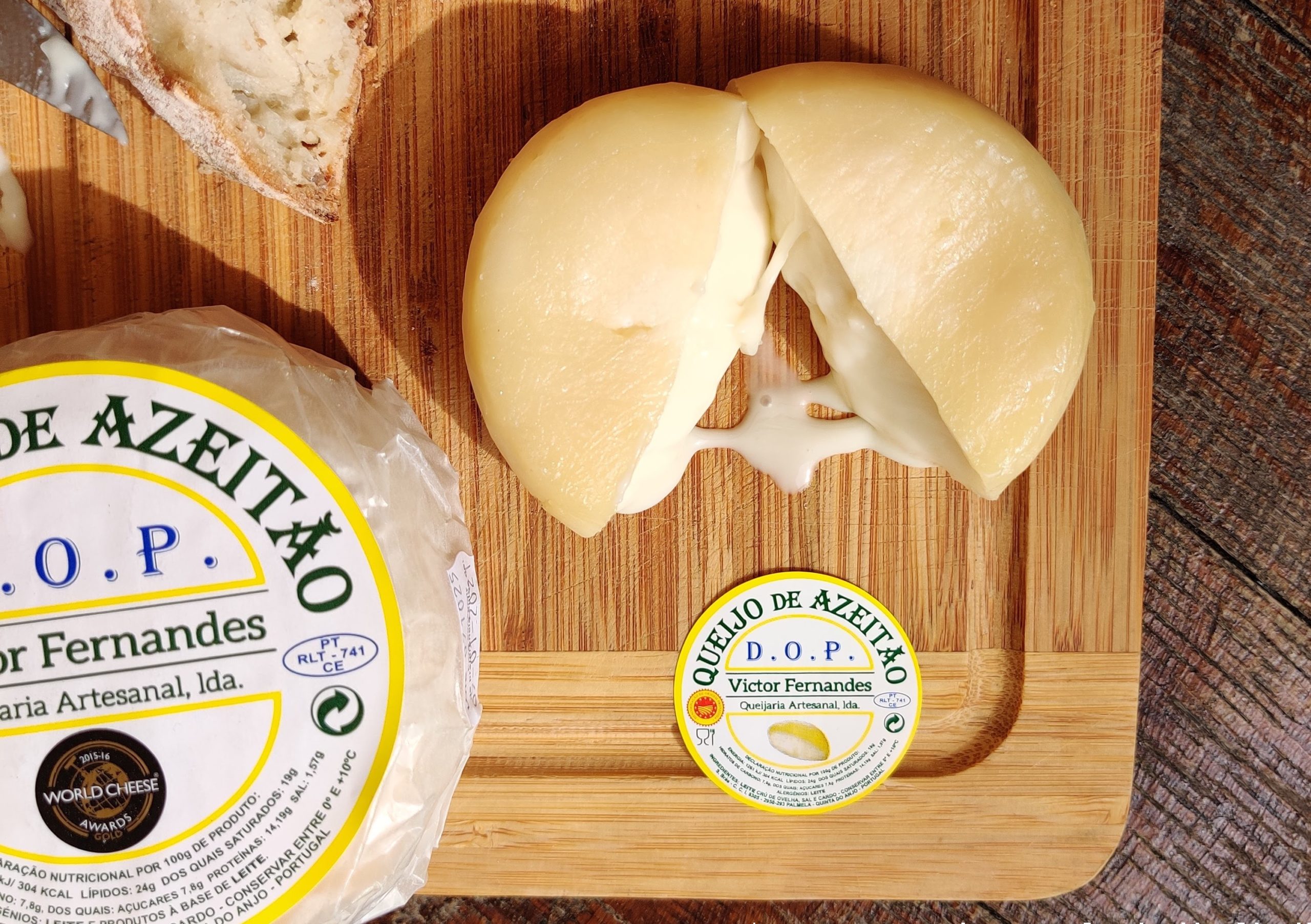
Along with Queijo da Serra, Azeitão cheese is one of the most beloved cheeses across Portugal. Blending acidity, salty and slightly spicy flavors, we could say it’s a rather complex cheese. It was distinguished as one of the 50 best gastronomic products in the world at the Great Taste Awards back in 2014.
PDO Azeitão cheese is made from raw sheep milk, cured until it reaches a semi-hard yet buttery consistency, best suited to be spread rather than cut into slices. It is produced in the counties of Palmela, Sesimbra and Setúbal, very close to Lisbon. So if you come to visit us, considering a day trip to the south bank of the Tejo river to visit an artisanal cheese factory and perhaps a winery, would certainly make for an enticing plan! Asked us to design your own customized Country Cheese & Winery Day Trip.
🍷 Contrast the acidity of the cheese with a young white wine. For an even more luxurious experience, pair Queijo de Azeitão with an aged Moscatel de Setúbal.
7. Nisa cheese
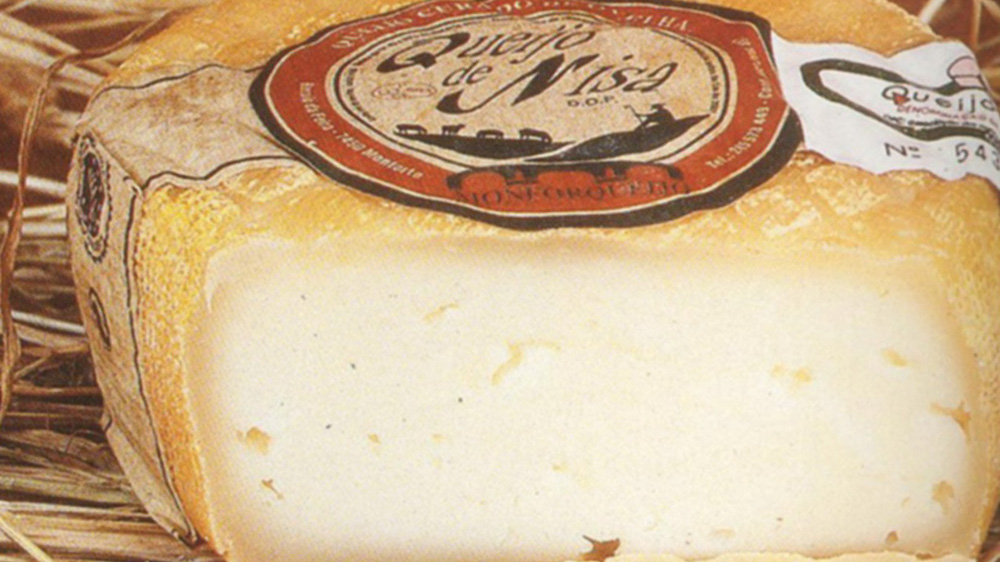
If you are into sheep milk cheeses with personality, you have by now gathered that Portugal is indeed a wonder to explore and taste! Queijo de Nisa from the upper Alentejo region is yet another raw milk cheese curdled with an infusion of thistle. It is matured during two distinct phases. Initially, at a lower temperature and, during a second stage, at a slightly warmer temperature no higher than 14ºC. After one to two months of curing, the cheese appears as semi-hard and somewhat yellowish. Its flavor is very intense with an acidic aftertaste.
Nisa cheese is famous for its high quality and for the fact that its production has remained purely artisanal.
🍷Pair with a full-bodied wine to cut through the fat and complement the rich flavor of Nisa cheese.
8. Terrincho cheese
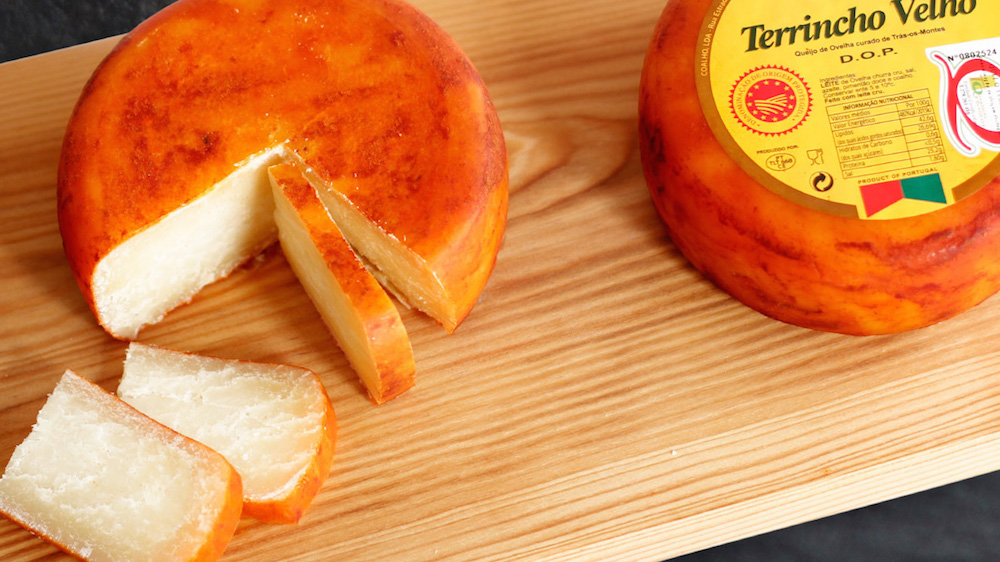
Churra da Terra Quente sheep produce the milk used to make Terrincho cheese, a variety of Portuguese cheese that hasn’t been produced for much longer than one hundred years. You will find Queijo Terrincho in both semi-hard and hard varieties. If you prefer a harder and more intense cheese, look for Terrincho Velho, pictured above.
The sheep graze on grass and this natural diet gives the milk the taste and characteristics that will make for a distinctly flavored cheese, that is yet soft on a palate.
🍷Young Terrincho is an easy to like cheese that goes well with a refreshing and acidic white wine like those made with Arinto grapes. Pair the more pungent Terrincho Velho with red wine like the one made with Trincadeira grapes from Trás-os-Montes, the same region where Terrincho cheese is produced.
9. Castelo Branco cheese
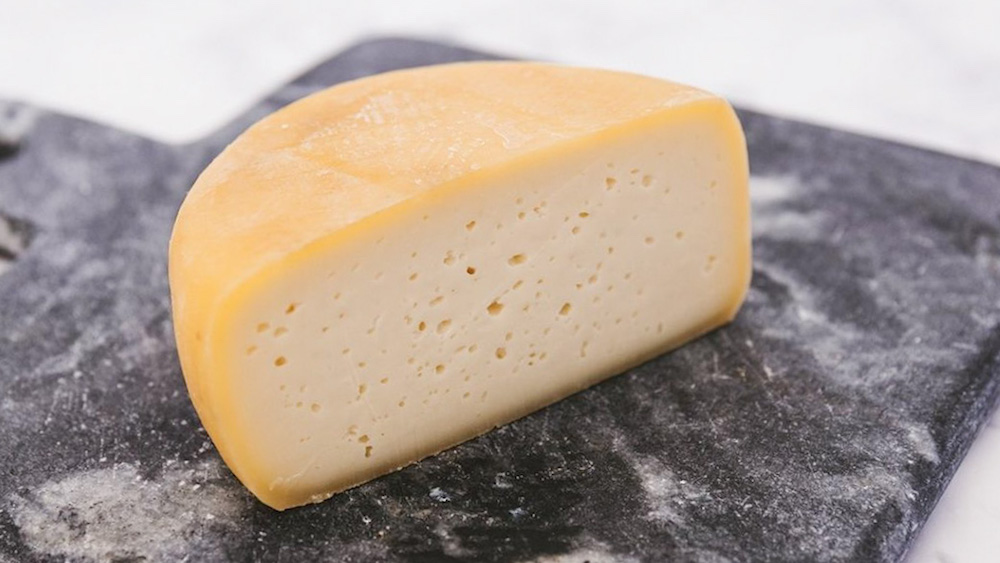
This is a raw sheep cheese, curdled with thistle flower. Its outside appearance is yellow but inside, in the younger varieties left to cure for forty five days, the cheese remains white. The variety Queijo de Castelo Branco Velho is cured for at least ninety days resulting in a harder and darker cheese with stronger and spicier flavor.
Until two centuries ago, the sheep in the areas surrounding Castelo branco were used only for wool production. But ever since the region started producing cheese, mostly to supply the greater Lisbon area, this has become one of the most reputable cheeses in the country.
🍷Remain loyal to the geographical region of origin of this cheese and choose a white wine from Beira Interior. If you are eating young Castelo Branco cheese, pair it with white wine. If you are tasting the ripened variety, velho, you may find that red wine will suit your palate best.
10 Pico cheese
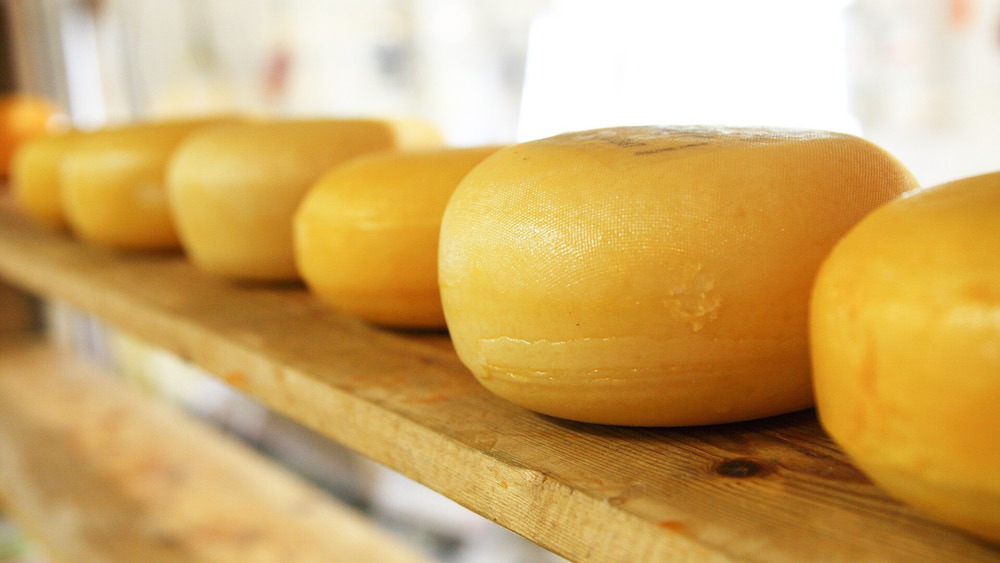
As a place popular for its high standard dairy industry, Queijo de São Jorge couldn’t be the only famous cheese from the Azores. In fact, there are many other quality cheeses being produced in the Portuguese archipelago, but Pico cheese deserves to be highlighted.
Hailing from the small island of Pico, where the highest mountain of Portugal is located, comes a PDO cheese as special as most of the food products that originate here. This is a semi-soft raw cow milk cheese, rather fatty, with a distinct salty and very pleasant flavor.
🍷If you are indulging into Pico cheese, take this as an opportunity to explore the distinctiveness of Pico wines too. The volcanic soil of Pico island surrounded by the saltiness of the Atlantic ocean are behind what could easily be considered the most unique wine region of Portugal!
As someone once said, everything’s fine… when you have cheese and wine! Join us in one of our natively curated food & cultural experiences.
Feed your curiosity on Portuguese food culture:
Quick Introduction To Portuguese Wine (and Portugal’s Wine Regions)
Foods you didn’t know were Portuguese
10 typical drinks from Portugal
Real people, real food. Come with us to where the locals go!
Join us in our natively curated food & cultural experiences.
Follow us for more at Instagram, Twitter and Youtube
